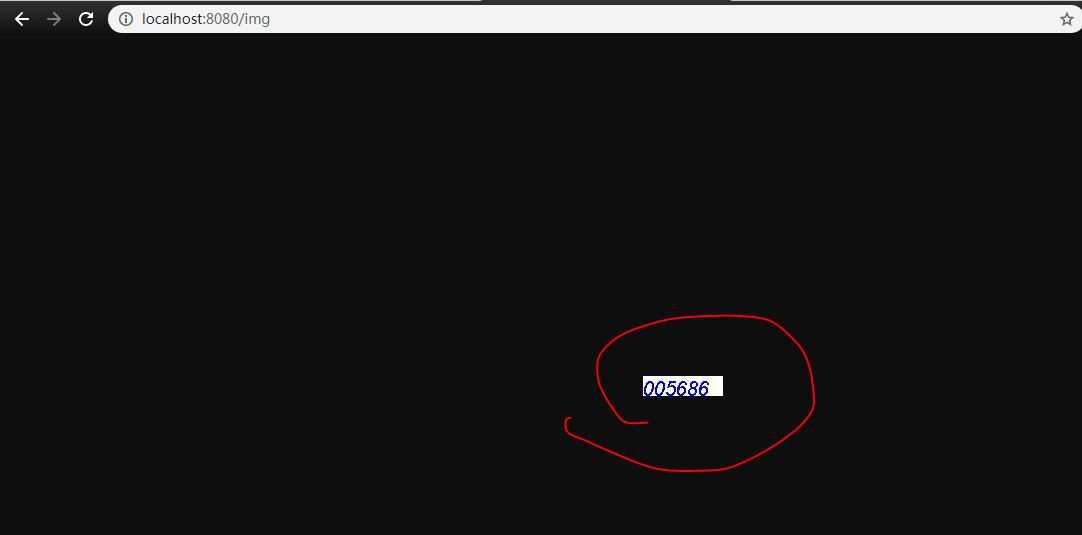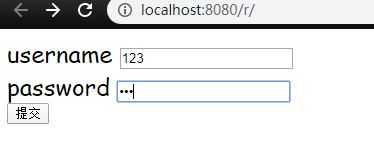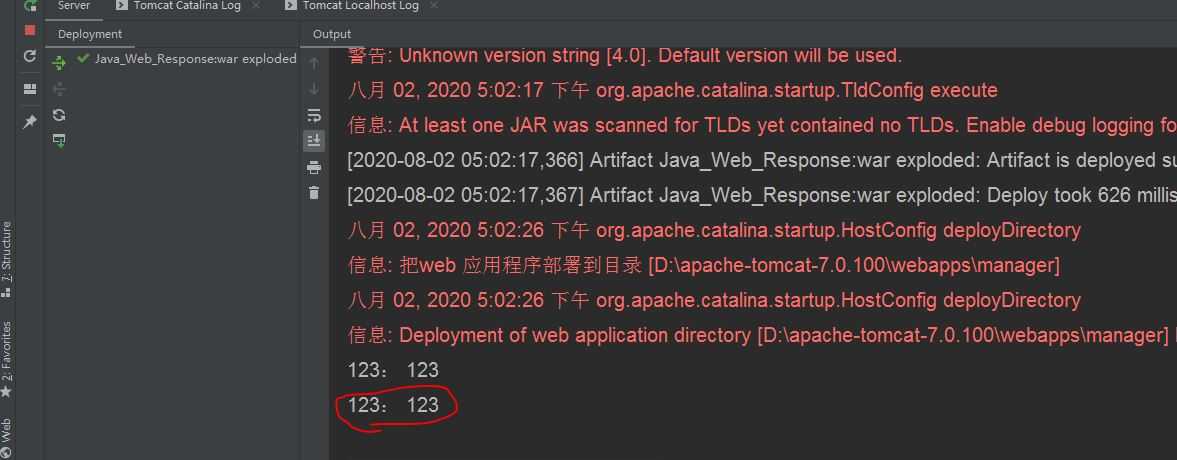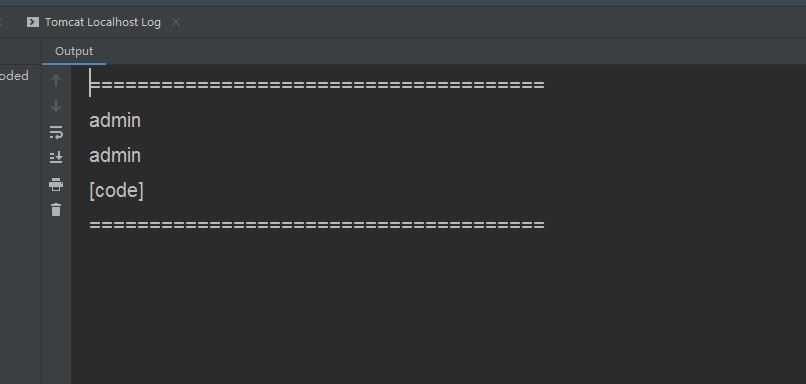在web服务器接收到客户端的请求时,会分别创建两个对象:HttpServletResponse && HttpServletRequest
如果要获取客户端请求过来的数据,则须使用HttpServletRequest
如果要给客户端响应一些信息,则须使用HttpServletResonse
1.1、分类
一些负责向浏览器发送数据的常用方法:
ServletOutputStream getOutputStream() throws IOException; PrintWriter getWriter() throws IOException;
一些负责向浏览器发送响应头的方法:
void setCharacterEncoding(String var1); void setContentLength(int var1); void setContentLengthLong(long var1); void setContentType(String var1); void setDateHeader(String var1, long var2); void addDateHeader(String var1, long var2); void setHeader(String var1, String var2); void addHeader(String var1, String var2); void setIntHeader(String var1, int var2); void addIntHeader(String var1, int var2);
一些响应的状态码
int SC_CONTINUE = 100; int SC_SWITCHING_PROTOCOLS = 101; int SC_OK = 200; int SC_CREATED = 201; int SC_ACCEPTED = 202; int SC_NON_AUTHORITATIVE_INFORMATION = 203; int SC_NO_CONTENT = 204; int SC_RESET_CONTENT = 205; int SC_PARTIAL_CONTENT = 206; int SC_MULTIPLE_CHOICES = 300; int SC_MOVED_PERMANENTLY = 301; int SC_MOVED_TEMPORARILY = 302; int SC_FOUND = 302; int SC_SEE_OTHER = 303; int SC_NOT_MODIFIED = 304; int SC_USE_PROXY = 305; int SC_TEMPORARY_REDIRECT = 307; int SC_BAD_REQUEST = 400; int SC_UNAUTHORIZED = 401; int SC_PAYMENT_REQUIRED = 402; int SC_FORBIDDEN = 403; int SC_NOT_FOUND = 404; int SC_METHOD_NOT_ALLOWED = 405; int SC_NOT_ACCEPTABLE = 406; int SC_PROXY_AUTHENTICATION_REQUIRED = 407; int SC_REQUEST_TIMEOUT = 408; int SC_CONFLICT = 409; int SC_GONE = 410; int SC_LENGTH_REQUIRED = 411; int SC_PRECONDITION_FAILED = 412; int SC_REQUEST_ENTITY_TOO_LARGE = 413; int SC_REQUEST_URI_TOO_LONG = 414; int SC_UNSUPPORTED_MEDIA_TYPE = 415; int SC_REQUESTED_RANGE_NOT_SATISFIABLE = 416; int SC_EXPECTATION_FAILED = 417; int SC_INTERNAL_SERVER_ERROR = 500; int SC_NOT_IMPLEMENTED = 501; int SC_BAD_GATEWAY = 502; int SC_SERVICE_UNAVAILABLE = 503; int SC_GATEWAY_TIMEOUT = 504; int SC_HTTP_VERSION_NOT_SUPPORTED = 505;
1.2、下载文件
首先,了解一些下载文件的过程。
代码实现:
package com.charles.responce; import javax.servlet.ServletException; import javax.servlet.ServletOutputStream; import javax.servlet.http.HttpServlet; import javax.servlet.http.HttpServletRequest; import javax.servlet.http.HttpServletResponse; import java.io.FileInputStream; import java.io.IOException; import java.net.URLEncoder; public class Down extends HttpServlet { @Override protected void doGet(HttpServletRequest req, HttpServletResponse resp) throws ServletException, IOException { // 1. 要获取下载文件的路径 String realPath = "D:\\JavaProject\\Demo05\\Java_Web_Response\\src\\main\\resources\\123.jpg"; System.out.println("文件路路径:"+ realPath); // 2. 下载的文件名是啥? String fileName = realPath.substring(realPath.indexOf("\\") + 1); // 3. 设置想办法让浏览器能够支持下载我们需要的东西 resp.setHeader("Content-Disposition","attachment;filename="+ URLEncoder.encode(fileName,"UTF-8")); // 4. 获取下载文件的输入流 FileInputStream in = new FileInputStream(realPath); // 5. 创建缓冲区 int len = 0; byte[] buffer = new byte[1024]; // 6. 获取OutputStream对象 ServletOutputStream out = resp.getOutputStream(); // 7. 将FileOutputStream流写入到buffer缓冲区,使用OutputStream将缓冲区中的数据输出到客户端! if ((len = in.read(buffer)) != 1){ out.write(buffer,0,len); } } @Override protected void doPost(HttpServletRequest req, HttpServletResponse resp) throws ServletException, IOException { doGet(req, resp); } }
注册servlet后,结果展示:可以看到,页面跳转后,浏览器自动下载该图片。

1.3、验证码功能
案例:创建一个图片数字验证码
代码实现:
package com.charles.responce; import javax.imageio.ImageIO; import javax.servlet.ServletException; import javax.servlet.http.HttpServlet; import javax.servlet.http.HttpServletRequest; import javax.servlet.http.HttpServletResponse; import java.awt.*; import java.awt.image.BufferedImage; import java.io.IOException; import java.util.Random; public class ImgServlet extends HttpServlet { @Override protected void doGet(HttpServletRequest req, HttpServletResponse resp) throws ServletException, IOException { // 设置浏览器每3秒刷新一次 resp.setHeader("refresh", "3"); // 在内存中创建一个图片 BufferedImage image = new BufferedImage(80,20,BufferedImage.TYPE_INT_RGB); // 得到图片 Graphics2D graphics2D = (Graphics2D) image.getGraphics(); // 笔 // 设置图片的背景颜色 graphics2D.setColor(Color.white); graphics2D.fillRect(0,0,80,20); // 给图片写数据 graphics2D.setColor(Color.blue); graphics2D.setFont(new Font(null,Font.ITALIC,20)); graphics2D.drawString(makeNum(),0,20); // 告诉浏览器,请求用图片方式打开 resp.setContentType("image/jpeg"); // 网站存在缓存,不让浏览器缓存 resp.setDateHeader("expires",-1); resp.setHeader("Cache-Control","no-cache"); resp.setHeader("Pragma","no-cache"); // 把图片写给浏览器 ImageIO.write(image,"jpg",resp.getOutputStream()); } // 生成随机数 public String makeNum(){ Random rd = new Random(); String num = rd.nextInt(9999) + " "; StringBuffer sb = new StringBuffer(); for (int i = 0; i < 7-num.length(); i++) { sb.append("0"); } num = sb.toString() + num; return num; } @Override protected void doPost(HttpServletRequest req, HttpServletResponse resp) throws ServletException, IOException { doGet(req, resp); } }
注册servlet后,结果展示:

1.4、重定向
重定向(Redirect)就是通过各种方法将各种网络请求重新定个方向转到其它位置
登录案例:
代码展示:
1. 首页的jsp页面:
<html> <body> <form action="${pageContext.request.contextPath}/login" method="get"> username <input type="text" name="username"> <br> password <input type="password" name="password"> <br> <input type="submit"> </form> </body> </html>
2. 重定向的jsp页面
<%@ page contentType="text/html;charset=UTF-8" language="java" %> <html> <head> <title>Title</title> </head> <body> <h1>Success!!!!!</h1> </body> </html>
3. servlet类
package com.charles.responce; import javax.servlet.ServletException; import javax.servlet.http.HttpServlet; import javax.servlet.http.HttpServletRequest; import javax.servlet.http.HttpServletResponse; import java.io.IOException; public class login extends HttpServlet { @Override protected void doGet(HttpServletRequest req, HttpServletResponse resp) throws ServletException, IOException { resp.setCharacterEncoding("GBK"); // 处理请求 String username = req.getParameter("username"); String password = req.getParameter("password"); System.out.println(username + ": " + password); // 重定向 resp.sendRedirect("/r/success.jsp"); } @Override protected void doPost(HttpServletRequest req, HttpServletResponse resp) throws ServletException, IOException { doGet(req, resp); } }
注册servlet后,运行结果展示:
1. 随便输入一个账号密码

2. 提交数据后,页面重定向至成功页面

3. 控制台展示

2. HttpServletRequest
HttpServletRequest代表客户端的请求,用户通过Http协议访问服务器,HTTP请求中的所有信息会被封装到HttpServletRequest,通过这个HttpServletRequest的方法,获得客户端的所有信息;
在这里提供一个小案例,来展示Request的使用方法:
代码展示:
@Override protected void doGet(HttpServletRequest req, HttpServletResponse resp) throws ServletException, IOException { req.setCharacterEncoding("utf-8"); resp.setCharacterEncoding("utf-8"); String username = req.getParameter("username"); String password = req.getParameter("password"); String[] hobbys = req.getParameterValues("hobbys"); System.out.println("============================="); //后台接收中文乱码问题 System.out.println(username); System.out.println(password); System.out.println(Arrays.toString(hobbys)); System.out.println("============================="); System.out.println(req.getContextPath()); //通过请求转发 //这里的 / 代表当前的web应用 req.getRequestDispatcher("/success.jsp").forward(req,resp); }
展示的jsp页面:
<%@ page contentType="text/html;charset=UTF-8" language="java" %> <html> <head> <title>Title</title> </head> <body> <div style="align-content: center"> <form action="${pageContext.request.contextPath}/login" method="post"> 用户名:<input type="text" name="username"> 密码:<input type="password" name="password"> 爱好: <input type="checkbox" name="hobbies" value="code">code <input type="checkbox" name="hobbies" value="dance">dance <input type="checkbox" name="hobbies" value="sing">sing <input type="checkbox" name="hobbies" value="swim">swim <input type="submit"> </form> </div> </body> </html>
跳转的jsp页面:
<%@ page contentType="text/html;charset=UTF-8" language="java" %> <html> <head> <title>Title</title> </head> <body> <hi>Success!!!!</hi> </body> </html>
注册servlet后,运行展示:



以上代码学自狂神说Java:https://space.bilibili.com/95256449?from=search&seid=14414140126489464870
原文:https://www.cnblogs.com/Charles-H/p/Learning_Web_07.html